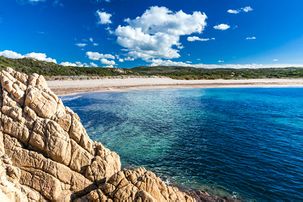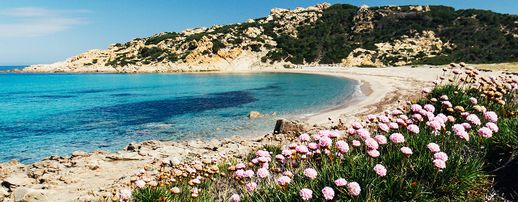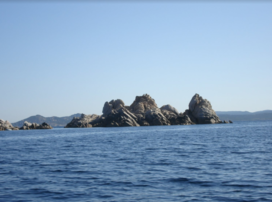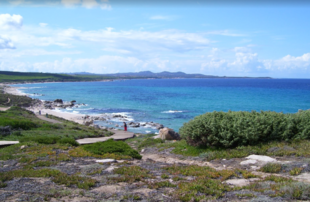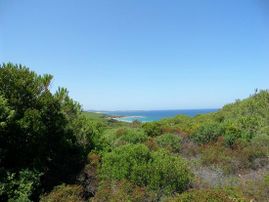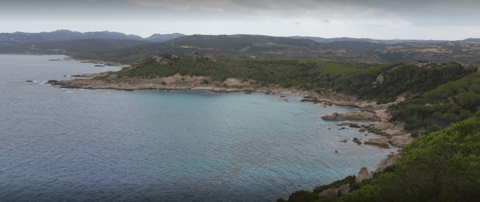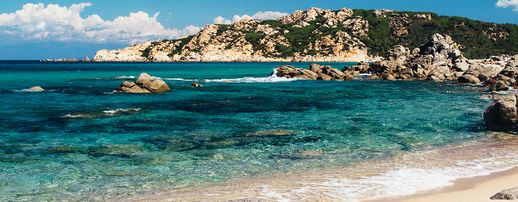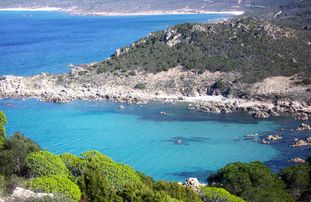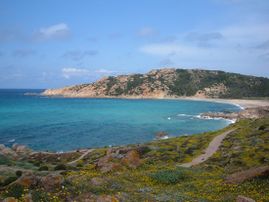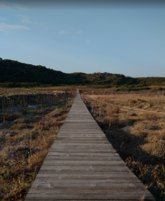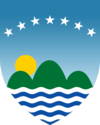Principality of Andany
41°08′44″N 9°07′27″E / 41.145668999°N 9.124140°E
| This page uses content from Wikipedia. The original article was at Principality of Andany. The list of authors can be seen in the page history. |
This article refers to a micronation or element of micronationalism which is defunct and no longer exists. You can help make the article reflect that or ask on the talk page for further information. |
This article contains information pertaining to a fictional micronation, micronationalist or other fictional element of micronational society or culture. |
Principality of Andany | |
|---|---|
| Motto: "Clavis est ad mare magnum" "The key to the Mediterran" | |
| Anthem: "The Leaves of Oak" | |
| Capital | Floriano |
| Other languages | Etruscan Spanish |
| Religion | Catholicism |
| Demonym(s) | Andean |
| Government | Semi-crowned democratic principality |
• Prince | Pablo Macias |
• Prime Minister | Syrus B. |
| Legislature | National Assembly |
| Senate | |
| House of Representatives | |
| Establishment | 25 July 2017 |
| Area | |
• Total | 123.31 km2 (47.61 sq mi) |
| Membership | 15 |
| Currency | Andanian Regal (§) (REG) |
| Time zone | AST |
The Principality of Andany was a fictional "micronation" created by Pablo Macias that was active for a brief period between July 2017 and September 2018. It was near the end of this time when it was discovered that Mr. Macias had fabricated much of the nation's achievements and actions as well as his location in relativity to the state. In addition, it was also discovered that he had engaged in financial fraud (via a stolen credit card) in order to fund Andany. It was for these reasons (as well as several others) that following the publication of this information, Pablo Macias (and subsequently Andany) dropped off the face of the micronational world and it is widely assumed that both he and the principality have ceased all opperations within the community. It is with this information in mind that this article has been archived for historical purposes; and to serve as an example for other micronationalists in what they shouldn't do when operating a micronation. As such, all information should be taken as a work of fiction and examined under the merits thereof.
Introduction
Andany (/ˈændəni/ AND-ə-nee ![]() Listen (help·info)), more commonly known as the Principality of Andany, is a democratic semi-crowned principality composed of 17 cantons, a federal district, and three territories. Andany is mainly located on the island of Sardinia, with the Prince living in the extraterritoriality of the Andean Embassy in the United States. The nation was founded on 25 July 2017 and is surrounded by the Province of Nuoro in Italy. Andany is also considered a micronation by external observers, with citizens believing it to be an un-macronationally recognized microstate. It has a surface area of 2.633208 km² (650.68 acres) and a population of 16 full citizens, of whom all are territorial residents except two. It is solely based on democratic capitalist ideology and educational system. The Principality's form of government is a democratic semi-crowned republic with an assemblaic system, defined by the Principality's constitution, the National Assembly. The current Prince of Andany is Prince Pablo Ailani Macías, who has ruled Andany since it was founded on 25 July 2017. Also, the current Prime Minister of Andany is Syrus B. Andany's official capital is the District of Floriano. Other cities include Ginepro and Menditsa. The Principality consists of three states and three territories. The Principality's total size has increased throughout its history, starting with 0.015 km² as the District of Floriano in Andany when it was first founded in 2017. The majority of the Principality's area comes from the Sardinian coastline, a territory which covers a large coastal area. The Principality's current surface area is at 2.641788 km² (664.64 acres). With all its territory surrounded by Italy. French, Spanish, and Italian are the native languages of most Andanian citizens, and this is reflected in the fact that Etruscan and Spanish are the Principality's official languages.
Listen (help·info)), more commonly known as the Principality of Andany, is a democratic semi-crowned principality composed of 17 cantons, a federal district, and three territories. Andany is mainly located on the island of Sardinia, with the Prince living in the extraterritoriality of the Andean Embassy in the United States. The nation was founded on 25 July 2017 and is surrounded by the Province of Nuoro in Italy. Andany is also considered a micronation by external observers, with citizens believing it to be an un-macronationally recognized microstate. It has a surface area of 2.633208 km² (650.68 acres) and a population of 16 full citizens, of whom all are territorial residents except two. It is solely based on democratic capitalist ideology and educational system. The Principality's form of government is a democratic semi-crowned republic with an assemblaic system, defined by the Principality's constitution, the National Assembly. The current Prince of Andany is Prince Pablo Ailani Macías, who has ruled Andany since it was founded on 25 July 2017. Also, the current Prime Minister of Andany is Syrus B. Andany's official capital is the District of Floriano. Other cities include Ginepro and Menditsa. The Principality consists of three states and three territories. The Principality's total size has increased throughout its history, starting with 0.015 km² as the District of Floriano in Andany when it was first founded in 2017. The majority of the Principality's area comes from the Sardinian coastline, a territory which covers a large coastal area. The Principality's current surface area is at 2.641788 km² (664.64 acres). With all its territory surrounded by Italy. French, Spanish, and Italian are the native languages of most Andanian citizens, and this is reflected in the fact that Etruscan and Spanish are the Principality's official languages.
Andany has a small services-based economy and the government's main source of income is through contributions from citizens, also known as voluntary taxation. Intermicronationally, Andany has had numerous periods of heightened influence in many places, with Prince Pablo Macias serving as Chair of the Federated Union of Micronations in 2017, of which Andany was a former member state. There have also been many fruad allegations which turned out to be privacy address control. Under the Economic Potential Index, it has a score of 4.2, and under Linden's Revised System it scores 4.2. Andany is a democratic and developed country with an advanced high-income economy, a high quality of life, and a very high standard of living. A founding member of the United Micropact, Andany has been the founder of many other organizations, such as the Intercontinental Union. Andany's unique cultural heritage, tourism industry, prominent shipping sector, and geostrategic importance classify it as a middle power, according to the Andanian Census Bureau. It is so far the largest economy in the Italian micronations according to the Nueva Ventura Stock Exchange, where it is an important regional investor.
Etymology
In March 2017, Pablo Macias, the then-to-be Prince of Andany, founded the Republic of Coral Rock. It was later disestablished due to inactivity. In the coming months, Pablo Macias scoured to find a new micronation. the future 33 National Assembly members voted on a name for the almost-founded country. The street the Prince lived on was then called "Avenida Andany". If a Prince is unanimously put in, then it would be a sovereign Principality. The name State of Celestine was one of the names because celestial bodies were easily visible from Andany. The name Principality of Andany won with a two-thirds majority compared with one-third to the State of Celestine. The short form "Andany" is also a standard. A citizen of the Principality of Andany is an "Andanian".
History
Indigenous peoples
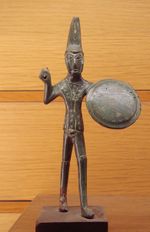
The Principality of Andany is located on the Italian island of Sardinia, which embodies a lot of history. Much of the island’s arable land is devoted to cereal cultivation and fruit growing. Macchia - grasslands mingled with a scrub of cistus, lentisk, myrtle, prickly pear, and dwarf oaks—covers most of the uncultivated countryside. Rich salt-loving vegetation is found along the shores and cliffs, and salty marshes extend along the coast. Most of the mammals are like those found in Italy, but some of those deserving special mentions are a Sardinian weasel, a native wild cat, the mouflon (a wild sheep found only in Sardinia, Corsica, and Cyprus), and the Cape hare. The dominating feature of the island (some 7,000 examples of which are said to exist) is the nuraghi: truncated conic structures of huge blocks of basalt taken from extinct volcanoes, built in prehistoric times without any bonding. Most nuraghi are quite small, but a few are fortresses. There is also a nuraghic village near Dorgali with traces of about 80 buildings identified. Expert opinion now dates the nuraghi to about 1500 to 400 BCE.
The civilization that built the nuraghi probably had its roots in the prehistoric population of the island, but its origins and affinities are uncertain, and it left no written records. Mant archaeological sites have been fully discovered in Sardinia. Examples include the Torre Di Longosardo, Coddu Vecchiu, and the Nuraghe la Prisgiona. Tt is possible, though that the Sherden, one of the Sea People who fought in Egypt in the 13th and 12th centuries BCE, either came from, or settled in Sardinia, and they gave the island its name. Archaeological evidence from the Nuraghi culture suggests a strongly organized power of tribal states. The working of metal from local mines was presumably the chief source of wealth. However, the presence of Phoenician trade settlements along the Sardinian coasts from the 9th or 8th century BCE must have vigorously contributed to Sardinian prosperity. In the centuries that followed, Sardinia often fell prey to passing pirates and marauders, owing to its strategic position in the middle of the Mediterranean sea. It is no wonder therefore that most of the main Sardinian cities are inland, wary as Sardinians were of the dangers that came from the sea. These raids continued right up to recent times, as some of the older folk used to describe. On the Costa Smeralda, for example, the natural caves at Liscia di Vacca were used as hiding places from the pirates by the Orecchioni family, just at the turn of the century. The highest local peak, Monte Moro, is so called because it provided a useful look-out against the Moors. Monte Canaglia (Rascal Hill), is the name given to the place where the scoundrels settled down and you can find traces in some local surnames, like Ragnedda, "wicked like a spider" or in place names, Lu Saraghinu "the Saracen", La Petra di li Tulchi, the rock where the Turks set ashore.
There is still memory in present day families of not too distant events, like the mother who left her child on the beach to play, while she collected berries close by. When she returned, she found the Saracens sailing off with her child and in grief lost all reason. She became known as "La scasciata d'Agnula Maria", Mad Angle Maria. The Casalloni family that today resides in nearby San Pantaleo narrowly escaped a bitter fate for their two small children, Stephen, and Luke, who fortunately was not in their house but under a nearby olive tree, when it was ravaged by the Moors. In thanksgiving, they donated to the church of an 18th-century flag. It is curious to note a further indication of the natural fear of invaders from the sea, that on the coast, the old Sardinian cottages never have a sea view as they were always built in positions where they couldn't be seen from the sea. Moreover, Sardinians completely lack a fishing tradition and the few fishermen on the island are all migrants, or their descendants, from the Pontine Islands, close to the mainland. It is an ironic quirk of fate, that today the recent economic prosperity of Sardinia has come from the sea, from an invasion of many summer tourists. This has also led to many intermarriages, with mainland Italians, Germans, Swiss, English, French, Scandinavian and even with Australians. Andany wouldn't be founded until many years later when Sardinia colonized immensely and became civilized greatly.
Independence and expansion
At 8:30 AST on 25 July 2017, Pablo Macias declared independence from Italy as the Principality of Andany. Unanimously, Pablo Macias was crowned as the Prince of Andany shortly after. A Declaration of Independence was sent in paper form and by email to the Italian Government. No response has come back so far. The Prince was on holiday when Andany declared Independence. An Instagram post was made on the founding of Andany. The purpose of the Principality of Andany was to protect the endangered Mediterranean species Queen conch,[1] and the Posidonia oceanica, or Mediterranean seagrass.[2] The Queen conch species are being killed and their habitats have been destroyed by fishermen and boats. The Posidonia Oceanica is known in Italy as "the olive of the sea".[3] The Prince values Queen Conch, thus creating the Queen Conch Restoration Act. The Queen Conch Restoration Act was signed the day Andany was founded. It consists of it being the current National Animal and having extra care from the Oceanic Conservation Agency. Andany was founded with basic principles based on the Etruscan societal standards and a democratic government.
Geography, climate, and environment
Andany is located Sardinia, between the latitudes of 41° and 42° N, and longitudes 9° and 10° E. All the land surrounding Andany is part of Italy. The land area of the entirety of mainland Andany is approximately 2.641788 km2 (1.02 mi2), of which 2.640 km² (1.019 sq mi) is land and 0.001788 km² (0.0007 sq mi) is water. The mainland of Andany is entirely owned priavtely by the family Prince, according to records found on the website of Andany's government. The entire land of area of all territories and land is 123.31 km2 (47.61 mi2). Floris is the largest state, at 0.983 km2 (0.4 sq mi). The smallest state, Mendia, is 0.685 km2 (0.3 sq mi) in area. The unpopulated territories of Gaea Rock, Emperor Island, and Mālaekahana together cover 115.59016 km2 (44.62961 mi sq). The entirety of Andany’s coastline and land border stretches 5.82 km (3.61 mi) on the Mediterranean Sea and Gulf of Andany. Below-ground is part of the Variscan basement, which consits of a plutonic earth metal complexity. Some volcanic sedimentary rocks can be found in Andany, more likely on Juniper Peak. The valley that Andany is in is called Gallura. The Lipán Tribe of Andany created the first Native Andanian Indian Reservation, with a steady population of 2.
To the north, Andany has the Duyatán Peninsula, with the Bay of Menditsua to the right, and the Gulf of Andany left of the peninsula. Also, Juniper Peak, a granite promontory topped with junipers, towers over the entire country. The Hudson Mountain Range is a mountain range the northern part of Andany; which was turned into a conservation area with the Hudson Agreement after the Revolutionary War occured. The 4 meters wide Saint Michael's River runs parallel to the state lines of Floris and Mendia, only to meet with the Frenchman River in the center of Andany. To the south, it consists of the Gallura Chip. Most of the land in the southern portion is flatland and small hills. It borders Italy (3.76 km) and the Mediterranean Sea. Andany’s only claims are of Gaea Rock, which is an islet that lies a few meters from Juniper Peak, and Snow Island in Antarctica; used as a sanctuary for Emperor Penguins, and Mālaekahana, a Hawaiian territory. Andany is mostly flat in the southern Zuhaitzan regions. Though, the northern portion is more mountainous. The Frenchman River is the more famously known, 15-meter wide river that passes through Mendia and Floris from central Andany to Hibiscus Bay, emptying at Aintzira Lake. Gaea Rock is a territorial islet of Andany, lying off the coast of Juniper Peak.
-
Hibiscus Bay from Juniper Peak, the highest point in Andany
-
Hibiscus Bay from the Gineprian coast
-
The only Andanian Territory, Gaea Rock; an islet lying off the coast of Juniper Peak
-
The Gulf of Andany and the Duyatán Peninsula from Juniper Peak
-
Conch Beach from the District of Floriano
-
A view of of the Gulf of Andany
-
A classic Kostaldean view of Andany
-
A Gineprian view of the Hudson Mountain Range; the Florenean and Mendian stateline
Climate

Thanks to the great elevational changes of Juniper Peak, Duyatán Peninsula, and the mostly mountainous northern conformation, the climate of Andany is highly diverse. In most of the inland southern and central regions, the climate ranges from humid subtropical to humid continental and oceanic. In particular, the climate of the Hudson Mountain Range geographical region is mostly continental, with harsh winters and hot summers. The average temperature in Andany is 48 °F (9 °C) and with 8 mph (12 kph) winds. It is also humid in the spring months. The coastal areas of Zuhaitza and most of Floris generally fit the Mediterranean climate type (Köppen climate classification Csa). Conditions on peninsular coastal areas can be very different from the north's higher ground and valleys, particularly during the winter months when the higher altitudes tend to be cold, wet, and sometimes, yet rarely snowy. The coastal regions have mild winters and warm and generally dry summers, although lowland valleys can be quite hot in summer.[4]
Summer is usually more stable, although the northern regions often have thunderstorms in the afternoon/night hours and some grey and rainy days. So, while in the north, the summer is typically dry and sunny, the south tends to be more humid and cloudy. Spring and Autumn weather can be very changeable, with sunny and warm weeks (sometimes with summer-like temperatures) suddenly broken off by cold spells or followed by rainy and cloudy weeks. The southern places, such as Menditsa International Airport, recieve more rain and clouds. The central plains, such as Ginepro and Kostaldea, get moderate rain and close to no flooding during the rainy season. The northern portion, such as the Hudson Mountain Range and the highest geographical city in Andany, Menditsua (in elevation), gets little rain. Places like Juniper Peak and the Duyatán Peninsula recieve more rain than other higher places because of foliage and tree moisture. Both major rivers in Andany, the Frenchman and the Saint Michael's, induce a little more rain than usual, causing the minor three-inch flooding. Andany recieves more rain in winter than any other season, causing November through February to be called the "Rainy Season".
| Climate data for the Principality of Andany (near Santa Teresa Gallura) | |||||||||||||
|---|---|---|---|---|---|---|---|---|---|---|---|---|---|
| Month | Jan | Feb | Mar | Apr | May | Jun | Jul | Aug | Sep | Oct | Nov | Dec | Year |
| Record high °F (°C) | 59.0 (15) |
59.0 (15) |
59.0 (15) |
63.5 (17.5) |
68.0 (20) |
72.5 (22.5) |
78.8 (26) |
77.0 (25) |
76.1 (24.5) |
68.0 (20) |
63.5 (17.5) |
54.5 (12.5) |
54.5 (12.5) |
| Average high °F (°C) | 55 (12.8) |
55 (12.8) |
60 (15.6) |
62 (16.7) |
68 (20) |
75 (23.9) |
80 (26.7) |
80 (26.7) |
77 (25) |
71 (21.7) |
62 (16.7) |
58 (14.4) |
80 (26.7) |
| Average low °F (°C) | 38 (3.3) |
39 (3.9) |
41 (5) |
45 (7.2) |
50 (10) |
55 (12.8) |
60 (15.6) |
60 (15.6) |
56 (13.3) |
51 (10.6) |
45 (7.2) |
40 (4.4) |
38 (3.3) |
| Record low °F (°C) | 50.0 (10) |
51.8 (11) |
51.5 (10.83) |
58.4 (14.67) |
59.0 (15) |
63.5 (17.5) |
68.0 (20) |
68.0 (20) |
63.5 (17.5) |
60.8 (16) |
55.4 (13) |
51.8 (11) |
50.0 (10) |
| Average Precipitation inches (mm) | 1.96 (49.8) |
3.93 (99.8) |
0.78 (19.8) |
0.39 (9.9) |
0.78 (19.8) |
0.39 (9.9) |
0.19 (4.8) |
0.11 (2.8) |
0.98 (24.9) |
1.57 (39.9) |
2.95 (74.9) |
3.93 (99.8) |
1.49 (37.8) |
| Source no. 1: Weather and Climate.com [5] | |||||||||||||
| Source no. 2: Max., Min., Avg. Temperatures of Andany [6] | |||||||||||||
Wildlife
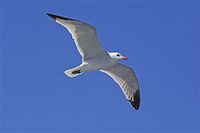
The Andanian ecology is megadiverse micronationally: about 300 species of vascular plants occur in the contiguous Principality of Andany and Gaea Rock, and over 1,800 species of flowering plants are found in Zuhaitza, few of which occur on the Gaea Rock. The Principality of Andany is home to approximately 100 mammal species, 30 bird species, 23 reptile species, and 10 amphibian species. About 400 insect species have been described. The Queen conch is both the national invertebrate and national animal of Andany and is an enduring symbol of the country itself. The seahorse is also a sacred animal in Andanian culture, with a planned seahorse statue being built at the future Hibiscus Promenade. The seahorse is also used in Andany TV, the only privately run television program for Andany. There is a national park, as well as a wilderness conservation area which was fought over in the Andanian Revolutionary War. Altogether, the government owns about 15% of the country's land area. Most of this is protected, though some are leased for oil and gas drilling, mining, logging, or sheep ranching; about 2% of that land is used for military purposes. Environmental issues have been on the national agenda since 2017. Environmental controversies include debates on oil and wildlife area, dealing with air and water pollution, the economic costs of protecting wildlife, logging, and deforestation, and international responses to global warming. Many federal and state agencies are involved. The most prominent is the Land Conservation Agency (LCA), created by the Prince and Prime Minister's order in 2018. The idea of wilderness change has also shaped the management of public lands since 2017, with the Wilderness Act of 2018. The Natural Species Act of 2018 is intended to protect threatened and endangered species and their habitats, which are monitored by the National Park Service.
Demographics
Population
The Andanian Census Bureau counted the country's population to be 15 as of 12 April 2018, and to be adding 1 person (net gain) every 2 weeks from citizenship applications. The Andanian population almost doubled during the Andanian Revolutionary War, from 6 in Janurary 2018. Andany sometimes takes advantage when large population increases are projected. In 2017 and 2018, the average woman in Andany gave birth to 2.05 children. Foreign-born immigration has also caused the Andanian population to continue its rapid increase with the foreign-born population doubling from 4 in 2017 to 9 in 2018, representing one-fourth of the population to increase. The foreign-born population is almost all citizens. Andany has a very diverse population; 2 ancestry groups have more than six members combined. Méxican Andanians are the largest ethnic group (circa 4) – followed by Native Andanian Indians (circa 2) American Andanians (circa 1), Canadian Andanians (circa 1), and Russian Andanians (circa 1). There are 4 Méxican Andanians (26.66%), 4 Nigerian Andanians (26.66%), 3 American Andanians (20.0%), 1 Canadian Andanian (6.66%), 1 Guatemalan Andanian (6.66%), 1 Russian Andanian (6.66%), 1 Pakistani Andanian (6.66%). According to a survey done by the Andanian Census Bureau in 2017, all Andanian citizens sexually identify as straight.
Government and politics
Andany is a de jure representative democracy, "in which majority rule is tempered by minority rights protected by law". The government is regulated by a system of checks and balances defined by the Andanian Constitution, which serves as the country's supreme legal document. In 2017, Andany ranked 9.02 on the Democracy Index. In the Andanian semi-federalist system, citizens are usually subject to three levels of government: federal, state, and local. The local government's duties are commonly split between county and municipal governments. In almost all cases, executive and legislative officials are elected by a plurality vote of citizens by district. There is no proportional representation at the federal level, and it is rare at lower levels.
The federal government is composed of three branches:
- Legislative: The bicameral National Assembly, made up of the Senate and the House of Representatives; the Assembly makes federal laws, declares war, approves treaties, and has the power of the purse,
- Executive: The Prince is the commander-in-chief of the military, can veto legislative bills before they become law (subject to Assemblaic override), and appoints the members of the Cabinet (subject to Senate approval) and other officers, who administer and enforce federal laws and policies. The Prime Minister also holds similar duties.
- Judicial: The Supreme Court and lower federal courts, whose judges are appointed by the Prince with Senate approval, interpret laws and overturn those they find unconstitutional.
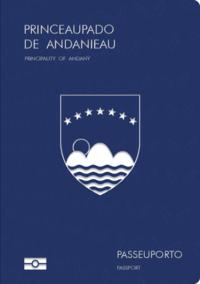
Considered unique by newcomers and new citizens, the National Assembly of Andany is made mostly of non Andanian citizens, but they do work for Andany. The House of Representatives has 22 voting members, each representing an assemblaic district for a two-year term. House seats are apportioned among the states by population every tenth year. At the 2017 census, one state had the minimum of 5 representatives, while Floris, the most populous state had 14. The District of Floriano and the two Andanian territories each have one member of the Assembly — these members are not allowed to vote. The Senate has 11 members with each state having three senators and each territory with a seperate member, elected at-large to six-year terms; one-third of Senate seats are up for election every other year. The District of Floriano does not have senators. The Prince serves a lifelong term and can be impeached with a bloodline replacement. The Prince is not elected by direct vote, but by an indirect electoral college system in which the determining votes are apportioned to the states and the District of Floriano. The Supreme Court, led by the Chief Justice of Andany, has three members, who serve for life. The state governments are structured in a roughly similar fashion. The governor (chief executive) of each state is directly elected. Some state judges and cabinet officers are appointed by the governors of the respective states, while others are elected by popular vote. The original text of the Constitution establishes the structure and responsibilities of the federal government and its relationship with the individual states. Article One protects the right to the "great writ" of habeas corpus. The first ten amendments, which make up the Bill of Rights, form the central basis of Indians' rights. All laws and governmental procedures are subject to judicial review and any law ruled by the courts to violate the Constitution is voided. The principle of judicial review, not explicitly mentioned in the Constitution, was established by the Supreme Court.
Political divisions

The Principality of Andany is a democratic capitalist country comprised of three states, a federal district, and three uninhabited territories. The states and territories are the principal administrative districts in the country. These are divided into subdivisions of counties and independent cities. The District of Floriano is a federal district that contains the capital of Andany, Floriano. The states and the District of Floriano choose the Prince of Andany. Each state has electors equal to the number of their Representatives and Senators in the National Assembly; the District of Floriano has three. Territories of the Andany, such as Gaea Rock, do not have electors because of their population, and so people in those territories cannot vote for the Prime Minister or Secretary of State. Coincidentally, all island territories are uninhabited.
Assemblaic Districts are reapportioned among the states following each anual Census of Population. Each state then draws single-member districts to conform with the census apportionment. The total number of voting Representatives is 22. 6 non-voting representatives represent the District of Floriano (3) and the three Andanian territories (3). Andany also observes tribal sovereignty of the Andanian Indian nations to a limited degree, as it does with the states' sovereignty. Andanian Indians are Andanian citizens and tribal lands are subject to the jurisdiction of the Andanian National Assembly and the federal courts. Like the states they have a great deal of autonomy, but also like the states, tribes are not allowed to make war, engage in their foreign relations, or print and issue currency. Citizenship is granted at birth in all states, the District of Floriano, and all Andanian territories.
Parties and elections

The Principality of Andany has operated under a two-party system for all of its history. For elective offices at most levels, state-administered primary elections choose the major party nominees for subsequent general elections. Since the general election of 2017, the major parties have been the Athenian Imperial Party, founded in 2017, and the Roman Imperial Party, founded in 2017. The Prime Minister is elected through the Electoral College system. Within Andanian political culture, the center-right Roman Party is considered "republican" and the center-left Athenian Party is considered "democratic". The states of the North, known as "blue states", are relatively liberal. The "green states" of the South are relatively conservative. Democratic Pablo Macías, the Prince, is serving as the first bloodline Prince of Andany. Leadership in the Senate includes Athenian Pablo Macias. Leadership in the House includes Speaker of the House, an Andanian citizen. In the 2nd Andanian National Assembly, both the House of Representatives and the Senate are controlled by the Athenian Party. The Senate consists of 6 Athenians and 5 Romans; the House consists of 18 Athenians and 4 Romans. In-state governorships, there are 10 Athenians and 5 Romans. Among the DF mayor and the three territorial governors, there are 2 Athenians and 1 Roman.
Foreign relations
The foreign relations of the Principality of Andany are made by its Department of Foreign Affairs. The Foreign Offices of Andany, also known as embassies, are located primarily in four different countries. Andany is also a member of the Union Against Micronational War, and the founding nation of the Micronational Olympic Group. The Principality has two total embassies. None are recognized by any government under which land they are in; (México and the United States). The Andanian Embassy in México is in Mexico City. Consulates of Andany In México are in the cities of Aguascaliéntes, Puerto Vallarta, Zacatecas, and Cancún. While the other being in the United States is in Las Vegas and a consulate in Los Angeles.
The Andanian Government establishes and maintains foreign relations with other states through its Department of Foreign Affairs (originally the Foreign Office). The Foreign Office was established in 2017 and is maintained under close supervision by the Prince and Prime Minister. Andany continues to recognize other nations. The Principality of Andany recognizes several other micronations, such as the Conch Republic and Filettino.
Military
The Prince holds the title of commander-in-chief of the nation's armed forces and appoints its leaders, the Secretary of Defense and the Joint Chiefs of Staff. The three main branches include of the Andanian Army are the Navy of Andany, the Andanian Coast Guard, and the Andanian Air Force. Since the Andanian Revolutionary War, the military has gained combat experience and has had better training. The Andanian Department of Defense administers the armed forces, including the Army, Marines, Navy, and Air Force. The Coast Guard is run by the Department of Homeland Security in peacetime and by the Department of the Navy during times of war. In 2017, the armed forces had 3 personnel on active duty. The Reserves and National Guard brought the total number of troops to 2. The Department of Defense also employed about 2, not including contractors. Military service is also a voluntary "job" offered to late teens that are citizens of Andany. Andanian forces can be rapidly deployed by the Air Force's fleet of transport aircraft, the Navy's active aircraft carriers, and Marine expeditionary units at sea with the Navy's Mediterranean fleets. The military operates 2 bases and facilities abroad and maintains deployments greater than 20 active duty personnel in 3 foreign countries. The military budget of Andany in 2017 was more than §700 REG. At 15% of GDP, the rate was high among the top military spenders. Andanian defense spending as a percentage of GDP ranked 42nd micronationally in 2017 according to the Bank of Andany. Defense's share of Andanian spending has generally declined in recent weeks, from Revolutionary War peaks of §400 REG to §300 REG in 2018. The proposed base Department of Defense budget for 2017, §200 REG was a 2.5% increase over the founding; an additional §400 REG was proposed for the military campaigns in the Conservation Efforts. The last Andanian troops serving in the Revolutionary War departed in late March 2018. The military of Andany is the main powerhouse for any military operations in Andany.
Law and order
The laws in Andany are made through bills in the National Assembly and passed to the Prince for a final read-through and approval. Once a bill is approved, it is put into place the next day and can be reverted with only the Prince and Prime Minister's approval. The Judicial System interprets the law and includes the Supreme Court, National Court, and the Municipal Courts. The Supreme Court makes all high crimes and misdemeanors be charged for. It consists of 3 main judges who are elected for a five-year term. The National Court handles the crimes of robbery, assault, etc. The Municipal Courts are in charge of handling small fees, fines, and other small misdemeanors. There are 3 municipal courts in every state; they are found more commonly in major cities.
Economy
Andany's currency is the Regal. The Andanian government solely uses the silver standard as the monetary system in Andany. The current exchange rate of §1 Regal is equilvaelnt to 4 ounces of Andanian silver. One Regal is also equivalent to USD 65 because of one Regal having and being equivalent to four grams os silver. Cotton and paper are used to make the banknotes for Andany. They are produced by the Bank of Andany, from which Regal coins made from silver and printed banknotes are redistributed. The Bank of Andany issues Regal banknotes following the principles and rules established within the Andanian Economical System. As part of the Andanian Economical System, the Bank of Andany produces the quantity of Regal banknotes assigned to it, puts them into circulation, withdraws worn notes, takes part in the search for and experimentation of new security features and contributes to the definition of common standards for the quality of the notes in circulation and the fight against counterfeiting. Andany has a capitalist mixed economy which is fueled by funding, donations, and productivity. The nominal GDP of Andany is estimated to be §1,800 REG as of 2018. The Andanian Regal is the Andany’s only reserve currency. In 2017, the total Andanian trade deficit was §200 REG. Italy is the largest importer and exporter in Andany, with trades to and from Italy happening 94% of the time trading happens. In 2017, food was the largest import commodity, while small, old-fashioned wind turbines [1] were the country's largest export. In 2017, the private sector was estimated to constitute 82.4% of the economy, with federal government activity accounting for 8.6% and state and local government activity (including federal transfers) the remaining 9%. The number of employees at all levels of government outnumbers those in manufacturing by 3 to 1. While its economy has reached a postindustrial level of development and its service sector constitutes 32.8%% of GDP, Andany remains an agricultural powerhouse within its economy. The leading business field by gross business receipts is wholesale and retail trade; by net income, it is manufacturing.
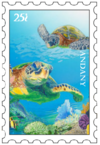

Wind products are the leading manufacturing field; as well as its second-largest importer. The wind products improted an exported are small, old-fashioned wind turbines [2]. The Andanian Mining Association provides data about coal and minerals that include neodymium, gold, zinc, granite, silver, and others. Agriculture accounts for just under 16% of the GDP. The Andanian Agricultural Statistics Service maintains agricultural statistics for products that include peanuts, pine wood, indigo, wheat, hibiscus seeds, cotton, corn, hay, and sunflowers. Also, the Andanian Department of Agriculture (ADA) provides livestock statistics regarding beef, poultry, pork, and dairy products. The micronation is also a developer and grower of ungenetically modified food. Consumer spending comprises 75% of the Andanian economy in 2017. In December 2017, the Andanian labor force consisted of 6 people. With all employed, the government is the leading field of employment. The largest private employment sector is health care and social assistance, with 2 people. About 10% of workers are unionized, though, this fluctuates from time to time. The Bank of Andany ranks Andany medium to high in the micronational ease of hiring and one of the last in firing workers. It has a smaller welfare state and redistributes less income through government action than European micronations and macronations tend to. The Principality of Andany also sometimes has an economy that guarantees its workers full paid vacations and allows paid family leave as a legal right. While federal law does not require sick leave, it is a common benefit for government workers and full-time employees at corporations. All full-time Andanian workers get paid sick leave, according to the Andanian Bureau of Labor Statistics, although only 20% of part-time workers get the same benefits. In 2017, Andany had a high workforce productivity per person in the micronational world.
Culture
The Principality of Andany is home to many cultures and a wide variety of ethnic groups, traditions, and values. Aside from the Native Andanian populations and the Prince's family, nearly all Andanians or their ancestors settled or immigrated within the past year. Mainstream Andanian culture is a Western culture largely derived from the traditions of European immigrants. More recent immigration from the Americas, and especially Latin America has added to a cultural mix that has been described as both a homogenizing melting pot and a heterogeneous salad bowl in which immigrants and their descendants retain distinctive cultural characteristics. Core Andanian culture was established by a few Catholic priests and settlers and shaped by the frontier settlement process, with the traits derived passed down to descendants and transmitted to immigrants through assimilation. Andanians have traditionally been characterized by a strong work ethic, competitiveness, and individualism, as well as a unifying belief in an "Andanian belief" emphasizing liberty, equality, private property, democracy, rule of law, and a preference for semi-limited government with a monarch. Andanians are extremely charitable by global standards. The Andanian Dream, or the perception that Andanians enjoy high social mobility, plays a key role in attracting immigrants and citizenship applications. Whether this perception is realistic has been a topic of debate. While mainstream culture holds that Andany is a high-class society, scholars identify significant differences between the country's social classes, affecting socialization, language, and values. Andanians' self-images, social viewpoints, and cultural expectations are associated with their occupations to an unusually close degree. While Andanians tend greatly to value socioeconomic achievement, being ordinary or average is generally seen as a positive attribute in almost all states.
Food

Mainstream Andanian cuisine is similar to that in other Western countries. Wheat is the primary cereal grain with about three-quarters of grain products made of wheat flour and many dishes use indigenous ingredients, such as potatoes, corn, and lime, which are usually consumed and grown by Native Andanians. These homegrown foods are part of a shared national menu on one of Andany's most popular holidays; Thanksgiving, when some Andanians make traditional foods to celebrate the occasion. Roasted turkey is a traditional menu item of an Andanian Thanksgiving dinner. Characteristic dishes such as pani frattau, pizza, and arancini derive from the recipes of various immigrants. Méxican dishes such as empanadas, tacos con papa, and pasta dishes freely adapted from Italian sources are widely consumed. Andanians don't drink much coffee, according to the Andanian Census Bureau. Marketing by Andanian industries is largely responsible for making orange juice and milk ubiquitous breakfast beverages. Andanian lands can grow vegetables that other some other countries can't, thus making the land value increase from neighboring places.
Literature, philosophy, and visual art
In the days following the Andanian independence, the Prince of Andany wrote many articles and stories about the systems of Andany. These inlucuded maps of road systems and buildings. In one he wrote, "To build a capitol that will establish and contain the National Assembly of Andany.". These articles are stored in the Library of the Assembly; which is also online for viewing and educational purposes. Andanians have a certain taste in literature; mostly romance and non-fiction, according to a study made by the Andanian Writing Institution in early 2018. Most of the Andanian citizens read daily and enjoy listening to audiobooks, as they are more common and easily accessible.
An Andanian polititian was the first person to establish an Andanian philosophical movement: Realism. This was created to promote the real issues and their importance into Andanian society. It partly went ignored for the rest of 2017, until March 2018, when the Andanian Revolutionary War occured. This sparked conservative thought for nature and flora and fauna in Andany. Also, this led to the Hudson Agreement, the agreement that ended the fateful Revolutionary War in Andany. Nowadays, most Andanian citizens belive in this philosophy created by the Prince of Andany: Live wonderfully, remain positive, and most importantly, care about you natural surroundings.
Since the 2018 Micronational Games, Andany has been praised for creating videos of "astonishment". 73% of viewers who watched the Andany 2018 Opening Ceremony agreed that the video was very creative and used exceptional video editing software. Other visual arts include, but not limited to: films/movies, plays, and theatre. The Prince of Andany also gives the Golden Star Award. It is highly praised in Andany for being an award given to the finest of the best people that create a difference in modern Andanian society.
Music
The Prince of Andany himself was the first major Andanian composer. He composed The Leaves of Oak, Andany's national anthem, and The Tricolor March, Andany's national march. He also added the lyrics to the Andanian National Anthem. The Tricolor March was composed to express the ideas and thoughts of Andanian citizens in a musically way. Most Andanian music is classical, with the Battle of Hudson Creek composed by an Andanian citizen being the most popular. Classical music has also greatly shaped the taste of music in Andany. The French horn was made Andany's national instrument because the Prince of Andany plays it. This was voted by the Prime Minister as a gift. More recent Andanian music has been popularized too. Some Andanian citizens are releasing their contemporary-style music. They are predicted to get popular in both Andany and the micronational community when more songs and albums come out.
Sports
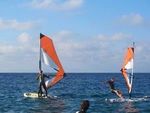
Since hosting the 2018 Micronational Games, sports in Andany have increased in popularity. The most popular sport in Andany is golf. It has become a staple and backyard golfing is the only way to golf; golf courses have been drafted and planned to be made in Andany. Running is the second most popular sport in Andany. After many tests, the fastest runner in Andany is Pablo Macias. He runs at a fast running speed of 16.4 miles per hour (26.3 km); or 23.46 feet per second (7.33 m/s). Andany has hosted the 2018 Micronational Games, which earned the most medals than the other countries. Andany earned a staggering 12 medals in total: seven gold, three silver, and two bronze. Surfing is a sport practiced in all states, most popularly in Zuhaitza. Windsurfing, rock diving, and scuba diving are all popularized sports in Andany. Most of the people doing these sports are tourists visiting Hibiscus Bay and nearby regions.
Mass media
The Floriano Times is Andany's most popular newspaper as of September 2018; both online and printed. The Andanian Broadcasting Network (ABN) is the main television broadcaster in Andany. National and private radio stations have been planned to be created. Most publications of any type of Andanian media are made in either English, Spanish, or Andean.
Science and technology

Its citizens, and external viewers that have heard of or seen presented innovations in person at shows or exhibitions hosted by macronationally-related hosts. The room-sized research laboratory, one of the first of its kind in Andany, developed a DNA research sample, the first wind-powered computer (connected to a wind power source) made in Andany, and other wind energy products. The Orion 8 Mission is a project aiming to set solar sails into Earth orbit and to develop a reentry craft for future space travel. Electrical advancements then lead to greater personalization of technology for individual use. As of 2018, 75.8% of Andanian households owned at least one computer, and 82.4% had high-speed Internet service. 91% of Andanians also own a mobile phone as of March 2018. The Andean government also allows freedom of use of the internet. In 2017, approximately two-thirds of research and development funding comes from the private sector.
Health
The Government of Andany is constitutionally and ethically required to provide citizens with national health care. Andanian citizens have a life expectancy of 82.4 years at birth, up from 78.2 years in 2017. The infant mortality rate of 7.3 per hundred places Andany. Decreasing obesity Andany and health improvements elsewhere contributed to increasing the country's rank in life expectancy. Obesity rates have more than doubled down in the last year, are the lowest in the micronational-industrialized world, and are among the lowest anywhere. Approximately one-third of the adult population is very healthy and an additional third is moderately healthy. In 2017, natural causes caused the most years of life lost in Andany. Low back pain, depression, neck pain, and anxiety caused the most years lost to disability. The most deleterious risk factors were poor diet, tobacco smoking, high blood pressure, high blood sugar, physical inactivity, and alcohol use. Alzheimer's disease, drug abuse, kidney disease, cancer, and falls caused the most additional years of life lost over their age-adjusted 2017 per-capita rates. Andanian teenage pregnancy and abortion rates are substantially lower than in other Western European nations, especially among Americans and Native Andanians.
The Andanian health-care system far outspends some other micronation on some occasions, measured in both per capita spending and percentage of GDP. Health-care coverage in Andany is a combination of public and private efforts and is sometimes universal. In 2017, 10.6% of the population did not carry national health insurance. The subject of uninsured and underinsured Andanians is a major political issue. In 2018, Floris became the first state to mandate universal health insurance. Federal legislation passed in early 2018 would ostensibly create a universal health insurance system around the country by late 2018, though the bill and its ultimate effect are issues of controversy. Finally, on 25 June 2018, a national health care program and plan was put in effect.
Scandal
Andany was involved in a scandal and recent violations by macronations that forced Andany from involvement in micro nationalism and Pablo Macias has been inactive as of late.
See also
- ↑ Carstarphen, Dee (2000). The Conch Book (2nd ed. ed.). Wicomico Church, VA: Pen & Ink Press. ISBN 0960754458.
- ↑ "Thalassia testudinum (Species code: Tt, Turtlegrass)". www.iucnredlist.org. Retrieved 28 October 2017.
- ↑ "Posidonia oceanica". eol.org. Retrieved 8 August 2017.
- ↑ "Temperature". Weather.com. Retrieved 30 November 2017.
- ↑ "Santa Teresa Gallura Climate". Weather and Climate.com. Retrieved 9 November 2017.
- ↑ "Annual Temperatures in Andany". World Weather Online.com. Retrieved 9 November 2017.
Available languages for this page:
• English |


